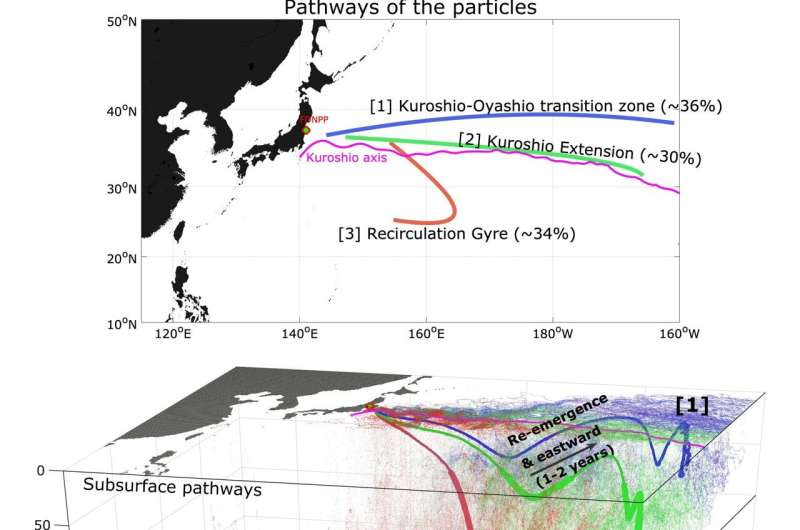The aftermath of the Fukushima nuclear disaster in March 2011 continues to reverberate through time, leaving a trail of questions about the long-term consequences of the catastrophic event. Now, a groundbreaking study published in Frontiers in Marine Science sheds light on the intricate journey of Fukushima-derived tracers in the North Pacific Ocean, uncovering the longevity of their transport and the profound implications for marine ecosystems.
Led by Sang-Yeob Kim, a senior researcher at Korea’s Institute of Ocean Science and Technology, the research team embarked on a comprehensive investigation into the movement and residency of radioactive cesium isotopes—key tracers of the Fukushima fallout—in the vast expanse of the North Pacific. Employing sophisticated modeling techniques and ocean reanalysis data spanning over two decades, the study delves into the dynamic interplay of ocean currents and seasonal variability that shape the dispersal of these tracers.
The Fukushima disaster, triggered by an earthquake-induced tsunami, resulted in the release of significant amounts of nuclear radiation into the environment. While immediate efforts focused on mitigating the crisis and stabilizing the damaged reactors, the persistent legacy of the event extended far beyond the confines of the nuclear plant. The contamination of ocean waters, food supplies, and surrounding ecosystems underscored the urgent need to understand the long-term fate of the radioactive pollutants.
The study’s findings offer unprecedented insights into the intricate pathways followed by Fukushima-derived tracers as they navigate the complex currents of the North Pacific Ocean. Through Lagrangian particle tracking simulations, the researchers traced the trajectories of cesium isotopes released into the atmosphere, unraveling their journey from atmospheric deposition to subsurface subduction and eventual dispersion across the basin.
Central to the study is the role of the North Pacific subtropical mode water, a crucial reservoir of Earth’s essential elements, including carbon, oxygen, and nutrients. This subsurface water mass, characterized by its unique density and temperature profile, serves as a conduit for the transport of Fukushima-derived tracers over vast distances and extended periods.
The researchers’ meticulous analysis revealed distinct patterns of tracer dispersion, with a significant portion of particles following the eastward flow of the Kuroshio Extension—a powerful ocean current off the Japanese coast. Over the course of four to five years, these tracers gradually permeated the subtropical region of the North Pacific, reaching distant shores such as Taiwan, the Philippines, and the Japan Sea.
Furthermore, the study elucidated the seasonal variability in oceanographic conditions, particularly within the Kuroshio-Oyashio current transition zone. As temperatures fluctuated and currents shifted, particles were alternately subducted into deeper layers or resurfaced, reflecting the dynamic nature of ocean circulation and its influence on tracer dispersal.
The implications of these findings extend beyond the confines of the North Pacific, highlighting the persistent legacy of the Fukushima disaster and its far-reaching consequences for marine ecosystems and human health. By elucidating the transport dynamics of radioactive pollutants, this study underscores the importance of continued monitoring and mitigation efforts to safeguard the health of our oceans and the well-being of future generations.
As Fukushima’s legacy unfolds across the vast expanse of the North Pacific, it serves as a stark reminder of the profound interconnectivity between human activities and the delicate balance of the natural world. Through collaborative research and interdisciplinary inquiry, we strive to unravel the complexities of this ongoing environmental crisis and chart a course toward a more sustainable and resilient future.
